Shoulder

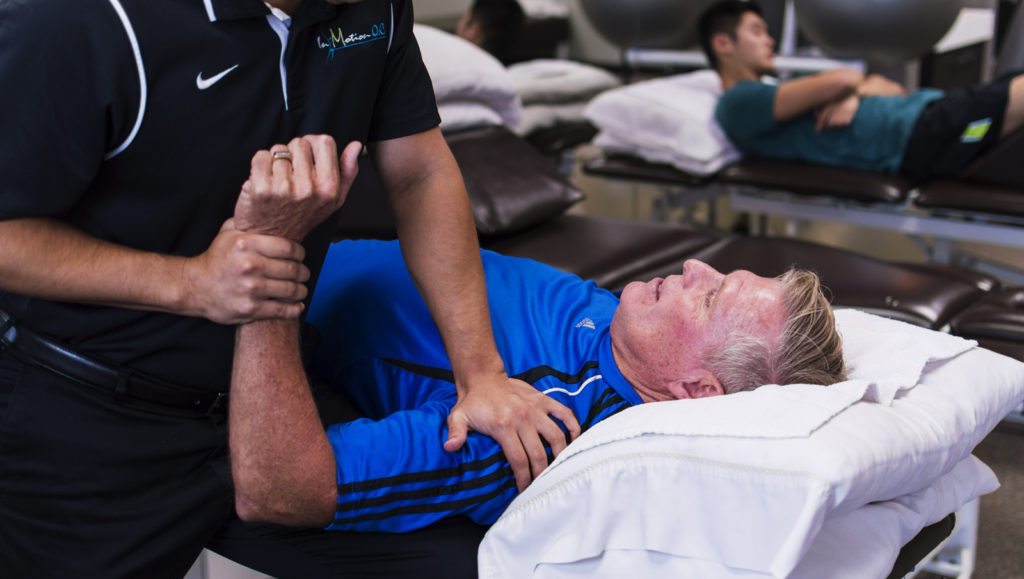
The shoulder is one of the most active parts of the body. We raise our arms, reach for things, push away from the ground, pick ourselves up, carry things, and so much more utilizing the mobility of our shoulders and arms, and the strength of our backs. Our shoulders are a part of the entire working musculoskeletal system, but can often be at risk for injury and pain due to the intricacies and delicate position in that system. At In Motion O.C., we help our clients understand why they feel pain in their shoulders, how the shoulder should be used, and how it can help them get the most out of their lives. As we learn to recognize what shoulder pain feels like and where it comes from, it’s best to start with the basics of shoulder anatomy to visualize it.

Anatomy of the Shoulder Includes
- Bones
- Joints
- Ligaments
- Nerves
- Arteries and Veins
- Bursa
Like everything in the body, the shoulder’s structure is a scaffolding made of bones called the shoulder girdle. These bones are the shoulder blade (scapula), the clavicle (collar bone), the manubrium (breastbone), and the humerus (upper arm) that function together to create four separate joints. These joints work together in a coordinated fashion to allow for a great amount of motion at the shoulder joint. However, with more mobility there is increased risk for instability and injury.
The shoulder complex consists of a multitude of muscles that allow for us to reach, lift, carry, push, pull and all the other motions and abilities we are able to perform on a daily basis. Each of these muscles is responsible for a specific motion and function that we are able to perform. In addition, these muscles overlap each other to help stabilize and support these complex joints.
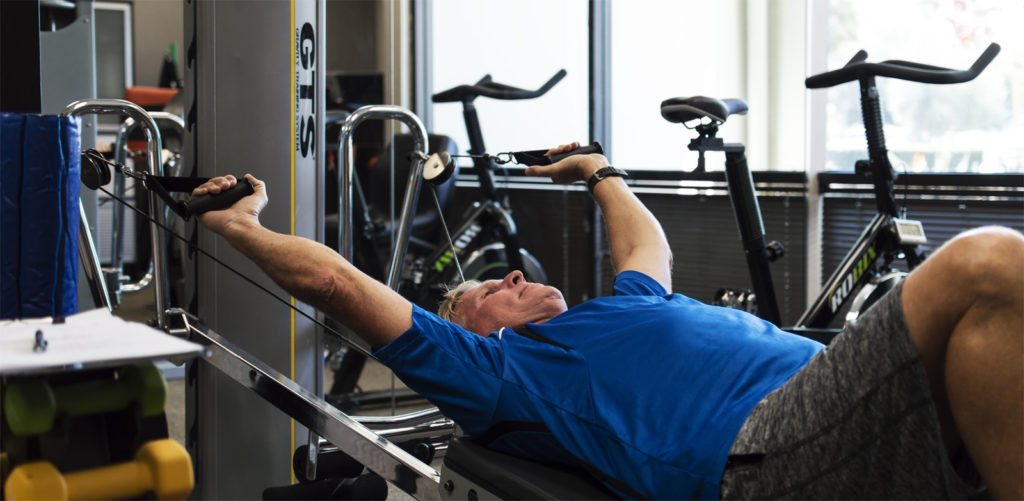
Muscles hold the scapula in place such as the deltoid; there are no real bone connections here, but a strong set of ligaments surround these joints; these ligaments are located around the head of the humerus connecting to a groove in the scapula. The ligaments create a casing around this delicate joint in the scapula that is also connected through with tendons from the biceps which hook underneath the humerus and around the scapula. With all the moving parts, we can see why there could be injuries due to tangling or pinching of these tendons.
The rotator cuff complex is a specific group of muscles that often become injured. The rotator cuff consists of four separate muscles that work together to hold the “ball within the socket” allowing for the stability of the joint. Each of these four muscles also have their own specific motions to assist in our ability to move the shoulder in different directions. An injury to this complex can greatly limit one’s ability to perform any activity with their arm.
Common Types of Shoulder Pain Include
Tendonitis
There are 17 muscles that attach to the shoulder blade through tendons. With poor movement patterns and changes to the structures, there is a risk for the tendons to become irritated. Most commonly tendinitis occurs at the biceps or supraspinatus (one of the rotator cuff muscles). If not treated appropriately, tendinitis can lead to full tears.
Bursitis
A bursa is a small fluid-like sac that acts as a cushion around the bone to protect it. This area often becomes inflamed with repetitive motions or pressure.
Arthritis
Arthritis refers to inflammation and excessive “wear and tear” on the shoulder joints. This often occurs with age or following old injuries. Arthritis can present differently person to person but will result in decreased mobility and pain. As arthritis progresses the bony changes can cause irritation to the surrounding tendons, ligaments and muscles leading to greater pain and disability.
Fractures
Experiencing a broken bone is most often the result of trauma such as from a fall or accident. This will result in severe pain, bruising and swelling. Seek out your physician for imaging to determine severity.
Frozen Shoulder
Refers to severe restrictions in your ability to move your shoulder in multiple directions. This can come on suddenly and without reason. This refers to an inflammatory process that impacts the shoulder capsule referred to by medical professionals as adhesive capsulitis. This condition often takes up to 1 year to heal and can be very debilitating.
Any pain related to the shoulder can often be reduced or managed by performing exercises and stretches dedicated to this area over time. It’s often necessary to see a specialist for shoulder pain if it becomes unbearable or interrupts your daily activities. Physical therapy is a great way to learn how to regain your mobility and to strengthen your muscles so that you can be sure to avoid injury.

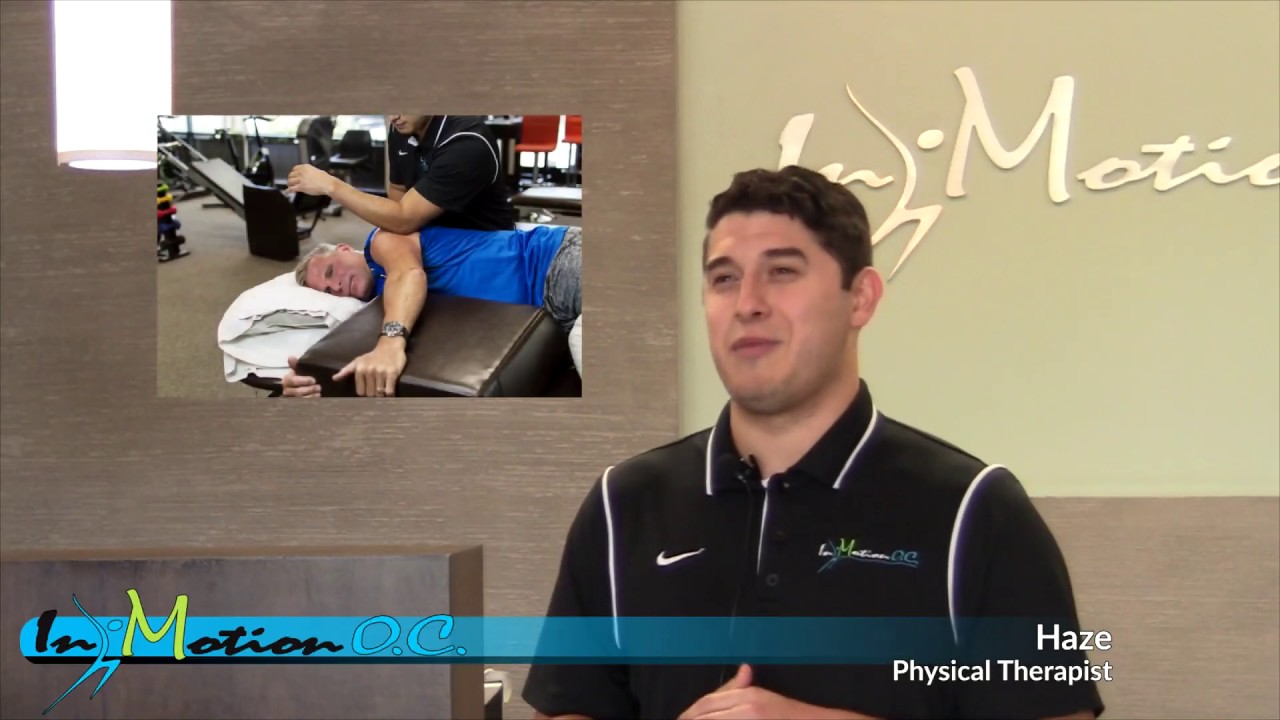
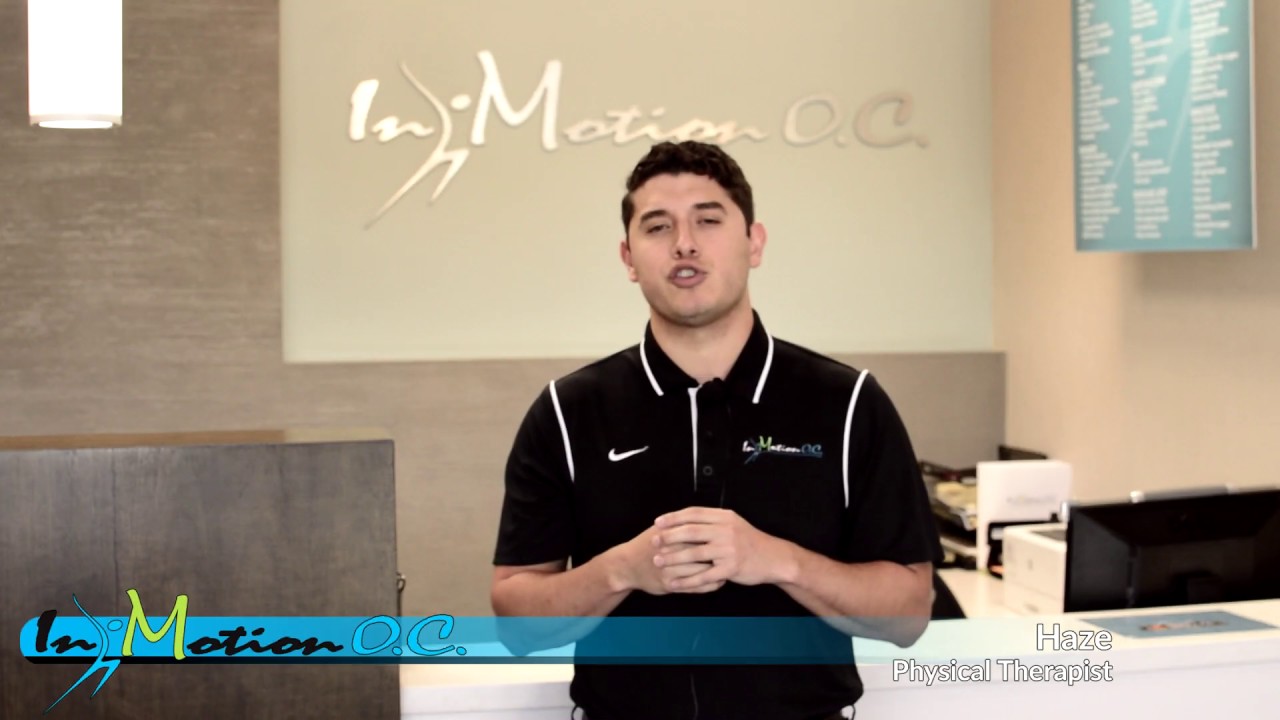
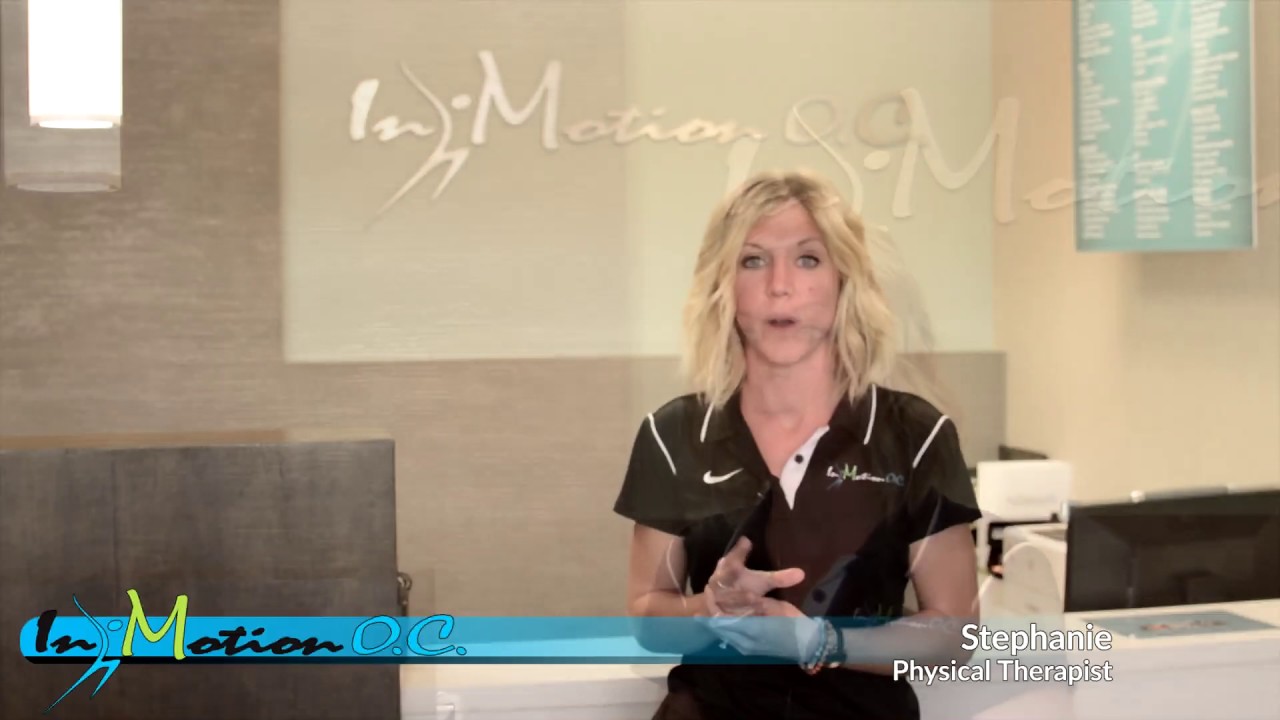
In addition to these exercises, you should rest the area, apply cold compresses and take some over the counter anti-inflammatory medication. Depending on the type of pain, how long it persists, and to what degree you feel this pain in the shoulder, it may be necessary to see a specialist that can reduce inflammation with anti-inflammatory injections.
*This information about physical therapy for shoulder ailments was reviewed by Dr Natalie Thomas, PT, DPT. If you have any questions, please don’t hesitate to contact us here.
Call In Motion O.C. today to start your customized physical therapy and personal training plan at 949.861.8600.


